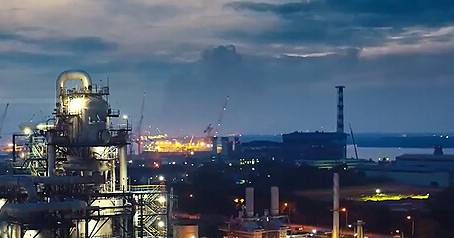Oct . 16, 2024 20:11 Back to list
HDPE Pipes and Fittings for Efficient Water Management Solutions in Modern Infrastructure
Understanding HDPE Pipes and Fittings A Comprehensive Guide
High-Density Polyethylene (HDPE) is one of the most versatile and widely used materials in the manufacturing of pipes and fittings. Known for its strength, durability, and resistance to a variety of chemicals, HDPE has become a popular choice across multiple industries, including construction, agriculture, mining, and municipal water supply. In this article, we will explore the characteristics, benefits, applications, and installation of HDPE pipes and fittings.
Characteristics of HDPE
HDPE is a thermoplastic polymer made from petroleum. It is characterized by its high strength-to-density ratio, which makes it an ideal choice for piping systems. Key features include
1. Durability HDPE pipes can withstand harsh environmental conditions, making them suitable for use in both above-ground and underground applications. They are resistant to corrosion, which extends their lifespan significantly compared to traditional materials such as steel or concrete.
2. Flexibility Unlike rigid pipes, HDPE pipes offer excellent flexibility, allowing for easier handling and installation. This characteristic is particularly beneficial in applications where ground movement or settling occurs.
3. Lightweight HDPE pipes are significantly lighter than their counterparts, which simplifies transport and reduces labor costs during installation.
4. Low Friction Coefficient The smooth interior surface of HDPE pipes minimizes friction, leading to lower energy costs and improved flow rates for fluid transportation.
5. Chemical Resistance HDPE is resistant to a wide range of chemicals, including acids, bases, and salts. This makes it suitable for industrial applications where chemical exposure is a concern.
Benefits of HDPE Pipes and Fittings
The adoption of HDPE pipes and fittings offers several significant advantages
1. Cost-Effectiveness While the initial investment may be higher than that of traditional materials, the durability and low maintenance needs of HDPE can lead to substantial cost savings in the long run.
2. Environmental Benefits HDPE is 100% recyclable, contributing to reduced environmental impact. Additionally, the energy-efficient manufacturing process of HDPE pipes requires less energy compared to other materials.
3. Versatile Applications HDPE pipes and fittings are utilized in various applications, including water supply systems, sewage and waste drainage, gas distribution, and irrigation systems, making them crucial in numerous sectors.
hdpe pipes and fittings

Applications of HDPE Pipes and Fittings
HDPE pipes and fittings are employed in a wide range of applications, including
- Water Supply HDPE pipes are commonly used for drinking water supply systems due to their non-toxic nature and ability to withstand high pressures.
- Sewage and Drainage The lightweight and durable characteristics of HDPE make it ideal for drainage systems, helping to prevent blockages and improve flow efficiency.
- Irrigation In agriculture, HDPE pipes are widely used for irrigation systems, ensuring efficient water distribution and reducing wastage.
- Gas Distribution HDPE is used for underground gas pipelines, offering safety due to its resistance to corrosion and ground movement.
Installation Considerations
While HDPE pipes and fittings offer many benefits, specific installation requirements must be considered for optimal performance
1. Trenching Proper trenching techniques should be employed to ensure adequate support and prevent any potential damage to the pipes.
2. Jointing Methods Different jointing methods, such as butt fusion or electrofusion, may be used to connect HDPE pipes. Choosing the correct method is essential for maintaining the integrity of the pipeline.
3. Testing Before a new HDPE pipeline is put into operation, it should undergo pressure testing to ensure there are no leaks and that it meets the required standards.
In conclusion, HDPE pipes and fittings represent a reliable and efficient solution for a wide array of piping needs. Their durability, flexibility, and resistance to chemicals make them an outstanding choice across many industries. As we continue to seek sustainable and cost-effective products, HDPE will undoubtedly remain a vital component in modern infrastructure.
-
High-Quality PPR Pipes and Fittings Durable ERA PPR & PVC PPR Solutions
NewsJul.08,2025
-
Black HDPE Cutting Board - Durable, Non-Porous & Food Safe HDPE Plastic Cutting Board
NewsJul.08,2025
-
High-Quality CPVC Panel Durable HDPE & PVC Panels Supplier
NewsJul.08,2025
-
Double PE Welding Rod Supplier - High Strength, Durable & Versatile Welding Solutions
NewsJul.07,2025
-
High-Quality PVC-O Pipe Supplier Durable 75mm PVC Pipe & Connections Leading PVC Pipe Company
NewsJul.07,2025
-
HDPE Drainage Pipe Supplier – Durable & Corrosion-Resistant Solutions
NewsJul.06,2025

